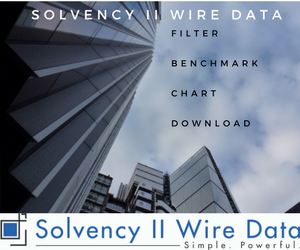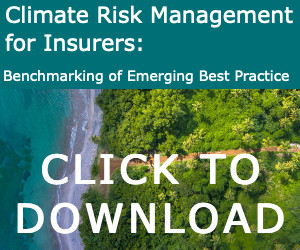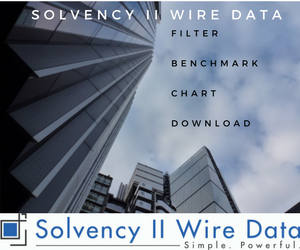Simˈpōzēəm
 Oliver Bäte, Chief Financial Officer, Allianz SE
The full implications of look-through reporting are of urgent concern to insurers and fund managers, and we feel that they are still not being properly addressed.
What are we talking about? EIOPA’s submission refers to the reporting of assets on a line-by-line basis for all direct investments (template Assets-D1). Here we fully agree with EIOPA and are providing all direct investments on a line by line asset basis.
But the issue of look-through reporting is about whether the investment is not direct but via a vehicle such as an investment fund. Look-through reporting of investment funds is dealt with in the guidelines proposed by EIOPA in template Assets-D4 according to which the main asset categories in an investment fund have to be disclosed by the insurer. As we have pointed out in our first submission, this is difficult to operationalise for mutual funds. Here we would like to repeat our analysis in the article we previously submitted.
As explained, for our consolidated investment funds (special funds), at Allianz we are in a position to provide the proposed look-through reporting as required and to disclose the main asset categories included in the investment funds. We would even be in a position to do look-through reporting on a line-by-line asset basis. That is because we own the reporting systems and have the necessary data warehouse in place. Special funds represent the bulk of our German business in investment funds.
However, for the reporting of mutual funds we see technical and legal issues in look-through reporting if it is required on a detailed basis.
The asset reporting systems for those funds are external from the insurer’s reporting systems. Expensive data system connections would have to be established to permit a data delivery eight days after the closing date of each quarter in order to be able to comply with the proposed reporting deadlines of five weeks. As confirmed by the ICMA submission, fund managers have no technical infrastructure in place to provide the required detailed information on time!
In addition, asset managers have serious legal challenges with the data delivery. On the one hand, they see a conflict of interest, because disclosure of the information to a single investor is forbidden unless all investors are equally treated and are provided the same information. On the other hand, when providing the data, fund managers might be breaching confidentiality agreements signed with third parties.
As an alternative to look-through reporting, we propose disclosing the total market value of the investment in a mutual fund as a one-line item of information.
Furthermore, we would like to repeat our position that look-through reporting is not necessary for pure unit-linked business. Insurers bear no financial risk for unit-linked investment funds. Thus, a look-through analysis is not a faithful form of risk reporting for solvency purposes. All investment risk, returns and losses remain with the policyholder. Thus, we see no justification for a reporting requirement.
Unnecessary reporting leads in turn to unnecessary costs, and costs are very much an issue. More cost consciousness in defining the solvency disclosure guidance is urgently needed, in particular when unnecessary data is supposed to be produced, as we feel is the case with unit-linked business. These costs will ultimately be passed on to policyholders and shareholders and defocus us from running our business.
Also, we would like to know what has been analysed in the 2009 survey EIOPA refers to with regards to the efficacy of line-by-line reporting. Did the study look at direct investments or investments via a vehicle such as investment funds? The latter is the issue of look-through reporting, the issue that concerns us most.
Finally, we welcome the statement by EIOPA that there should be a proportionality threshold. We would suggest, however, that it should refer to investments in mutual funds only. As noted in our first submission, we support the establishment of a materiality threshold that does not require look-through reporting for non-material investments in mutual funds.
In summary, we request relevant look-through disclosure guidelines that would differentiate between consolidated investment funds which are under a company’s control and non-consolidated funds which are managed externally and unit-linked investment funds which are owned by policyholders.
Overall, we also recommend that regulators and supervisors need to prove what exactly the benefit of the information requested is and how it will be used. The cost of introducing Solvency II is already amounting to billions of euros. More is not always better.
Link to Symposium index page.]]>
Oliver Bäte, Chief Financial Officer, Allianz SE
The full implications of look-through reporting are of urgent concern to insurers and fund managers, and we feel that they are still not being properly addressed.
What are we talking about? EIOPA’s submission refers to the reporting of assets on a line-by-line basis for all direct investments (template Assets-D1). Here we fully agree with EIOPA and are providing all direct investments on a line by line asset basis.
But the issue of look-through reporting is about whether the investment is not direct but via a vehicle such as an investment fund. Look-through reporting of investment funds is dealt with in the guidelines proposed by EIOPA in template Assets-D4 according to which the main asset categories in an investment fund have to be disclosed by the insurer. As we have pointed out in our first submission, this is difficult to operationalise for mutual funds. Here we would like to repeat our analysis in the article we previously submitted.
As explained, for our consolidated investment funds (special funds), at Allianz we are in a position to provide the proposed look-through reporting as required and to disclose the main asset categories included in the investment funds. We would even be in a position to do look-through reporting on a line-by-line asset basis. That is because we own the reporting systems and have the necessary data warehouse in place. Special funds represent the bulk of our German business in investment funds.
However, for the reporting of mutual funds we see technical and legal issues in look-through reporting if it is required on a detailed basis.
The asset reporting systems for those funds are external from the insurer’s reporting systems. Expensive data system connections would have to be established to permit a data delivery eight days after the closing date of each quarter in order to be able to comply with the proposed reporting deadlines of five weeks. As confirmed by the ICMA submission, fund managers have no technical infrastructure in place to provide the required detailed information on time!
In addition, asset managers have serious legal challenges with the data delivery. On the one hand, they see a conflict of interest, because disclosure of the information to a single investor is forbidden unless all investors are equally treated and are provided the same information. On the other hand, when providing the data, fund managers might be breaching confidentiality agreements signed with third parties.
As an alternative to look-through reporting, we propose disclosing the total market value of the investment in a mutual fund as a one-line item of information.
Furthermore, we would like to repeat our position that look-through reporting is not necessary for pure unit-linked business. Insurers bear no financial risk for unit-linked investment funds. Thus, a look-through analysis is not a faithful form of risk reporting for solvency purposes. All investment risk, returns and losses remain with the policyholder. Thus, we see no justification for a reporting requirement.
Unnecessary reporting leads in turn to unnecessary costs, and costs are very much an issue. More cost consciousness in defining the solvency disclosure guidance is urgently needed, in particular when unnecessary data is supposed to be produced, as we feel is the case with unit-linked business. These costs will ultimately be passed on to policyholders and shareholders and defocus us from running our business.
Also, we would like to know what has been analysed in the 2009 survey EIOPA refers to with regards to the efficacy of line-by-line reporting. Did the study look at direct investments or investments via a vehicle such as investment funds? The latter is the issue of look-through reporting, the issue that concerns us most.
Finally, we welcome the statement by EIOPA that there should be a proportionality threshold. We would suggest, however, that it should refer to investments in mutual funds only. As noted in our first submission, we support the establishment of a materiality threshold that does not require look-through reporting for non-material investments in mutual funds.
In summary, we request relevant look-through disclosure guidelines that would differentiate between consolidated investment funds which are under a company’s control and non-consolidated funds which are managed externally and unit-linked investment funds which are owned by policyholders.
Overall, we also recommend that regulators and supervisors need to prove what exactly the benefit of the information requested is and how it will be used. The cost of introducing Solvency II is already amounting to billions of euros. More is not always better.
Link to Symposium index page.]]>





